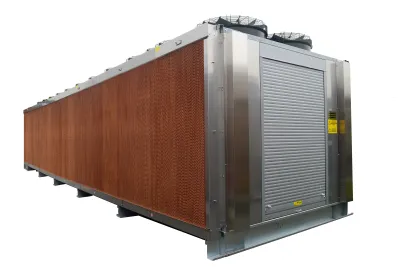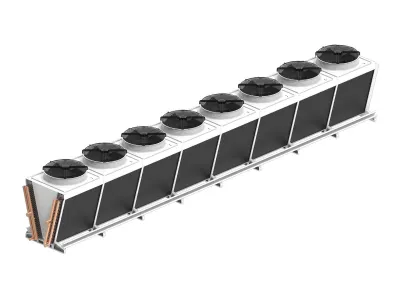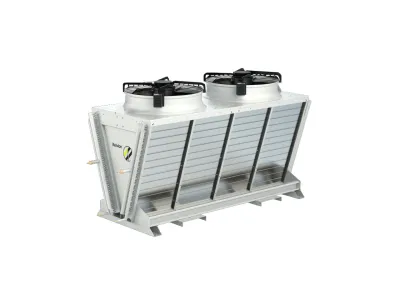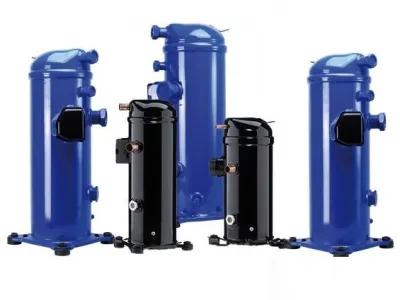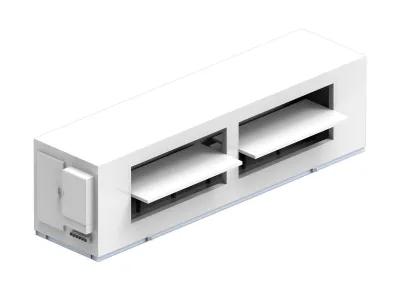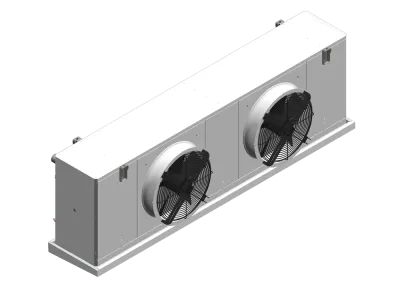The refrigeration cycle
Refrigerant Cycle
The following describes the individual components of a simple refrigerant cycle to provide a comprehensive understanding of the entire cycle.
The Evaporator
A liquid refrigerant absorbs heat as it evaporates. This phase change generates "cooling" in a refrigerant cycle. When a refrigerant at ambient temperature expands through a throttle point into the open atmosphere, it absorbs heat from the surrounding air and evaporates. If the atmospheric pressure changes, the refrigerant evaporates at a different temperature, as the evaporation temperature depends on the pressure. The component where this process occurs is the evaporator. Its task is to remove heat from the surrounding medium, essentially "generating cooling."

The Compressor
The refrigeration process, as mentioned earlier, is a closed-loop cycle. Therefore, the refrigerant does not expand into the open atmosphere as described in the previous example.
When the refrigerant coming from the evaporator is fed into a closed container, its internal pressure rises to the evaporation pressure. The refrigerant supply from the evaporator will eventually stop, and the temperature in both the evaporator and the container will gradually equalize with the ambient temperature.

To maintain a lower pressure and, consequently, a lower temperature in the container, vapor must be removed. This is achieved using a compressor that extracts vapor from the evaporator. The compressor can be compared to a pump that circulates vapor within the refrigerant cycle. In a closed cycle, pressure and temperature always seek equilibrium. For example, if the compressor extracts more vapor from the evaporator than is being generated, the pressure and temperature in the evaporator will drop. Conversely, if the evaporator load increases beyond the compressor’s capacity, the pressure and temperature will rise.

The Compression Process
Refrigerant leaves the evaporator as either saturated or superheated vapor and, upon entering the compressor, is compressed. Compression is typically achieved with a piston, similar to the operation of a car engine. To perform its function, the compressor requires energy, which is transferred to the refrigerant during the compression process. As a result, the refrigerant gas leaves the compressor at a higher pressure and in a significantly superheated state compared to when it entered. The energy required for compression depends on system pressure and temperature. Naturally, more energy is needed to compress 1 kg of vapor to 10 bar than to 5 bar.

The Condenser
In the condenser, the refrigerant releases heat, which is transferred to another medium with a lower temperature. The heat released consists of the energy absorbed in the evaporator and the energy required for compression.
The medium that absorbs this heat can be water or air. The condition is that the temperature of this medium is lower than the condensation temperature. The condensation process is comparable to the evaporation process, but with opposite phase changes, i.e., from vapor to liquid.

The Expansion Process
The liquid refrigerant flows from the condenser to a receiver, which corresponds to the container mentioned in section 3.1.
Due to the pressure increase from the compressor, the receiver pressure is much higher than the evaporator pressure. To reduce the pressure back to the evaporator level, a throttle point must be introduced, allowing the refrigerant to expand. The corresponding component is typically an expansion valve.
Just before the expansion valve, the liquid refrigerant is slightly below its boiling point. Due to the sudden pressure drop, a phase change occurs. The refrigerant begins to boil and evaporates at a lower temperature. This evaporation takes place in the evaporator, thereby completing the described refrigerant cycle.

The High and Low-Pressure Sides of the Refrigeration System
Various temperatures occur in the refrigerant cycle, as we deal with subcooled and saturated liquid, as well as saturated and superheated vapor. However, in principle, only two pressures dominate the system: evaporation pressure and condensation pressure. Accordingly, the refrigerant cycle is divided into a low-pressure side and a high-pressure side.


